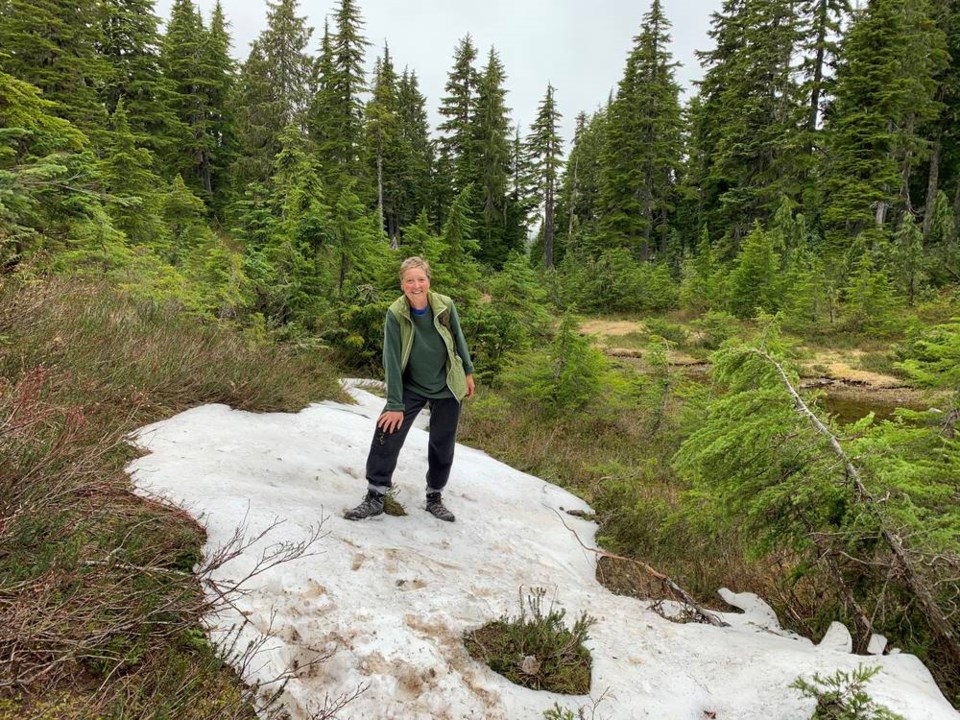There are two pastimes that we are able to enjoy throughout this strange year of COVID-19, reading books and embarking on new outdoor activities. Even on a small scale, these two activities can enrich our lives with beauty, knowledge, exercise, and awe at our incredible vistas, gardens and landscapes.
To embark on new ventures or small explorations, it is wise to read on the topic first and consider planning a new activity based on the wide variety of local books available (and it helps local booksellers as well — shop local!).
One of the most delightfully designed and informative examples is Popular Day Hikes — Vancouver Island by Theo Dombrowski (2016: Rocky Mountain Books).
I LOVE this book! It contains a diverse selection of hikes and walks, ranging from river footpaths to historic forested walks to mountain hikes, and includes lovely photographs, detailed maps, descriptions and facts, and most helpful of all for people like me, step-by-step directions, both on how to get there and how to follow the route!
I made it a point to embark on several of its recommended walks/hikes this summer and chose as my first a challenging trek, Mount Becher, the former site of Forbidden Plateau ski hill in the Comox Valley.
I was slightly nervous (“What if I turn my ankle and have to be rescued in a basket under a red blanket on television and everyone comments: “What’s that stupid old lady doing out there alone?!”) so my young outdoorsy friend Sarah came along with me (her father was a trail guide in the Rockies, so I felt safe with her).
“I have a whistle,” she said.
The start of our venture was a challenge with a long drive up a dirt road. At the parking lot, it was difficult to know where the trail began, but the book warned us of this challenge — “encroaching bushes” and “go straight uphill on a rutted roadbed,” it said (the book didn’t mention having to first cross a deep trench) — however, we were up for our planned adventure and this ominous beginning soon turned into a lovely cool trail through the forest, lined with lush shrubs, some with berries and woodland flowers dangling from their elegant stems, mossy patches, deep pools, wild bees (who leave you alone, thanks be to God due to my bee sting allergy) and clear glacial streams from the snow melt above.
The higher we climbed, the cooler the air became; patches of snow appeared in small grassy clearings, and the views of the valley, including the village of Cumberland and Comox Lake were, along with the thinning air, literally breathtaking.
Hikers passed us, dressed in pants with an abundance of pockets, buttons and zippers, accompanied by joyful dogs with great pink smiles wearing bear bells on their collars.
We passed the boundary into Strathcona Park, indicated by an inaccurate map.
“Isn’t this the area that hikers are taken out in a basket by helicopter?” I asked Sarah.
Nearing the cold grey peak, looming above the trees, we sat on a rocky ridge and ate a bag of cherries and huge “energy” cookies as the mists rolled in and covered the summit above. My fingers looked like sausages due to the high elevation. Sarah’s pale legs were covered in goose bumps, so we decided to hike back down.
Just nearing the end, picking our way down over those loose stones on that “rutted roadbed,” and in the middle of a sentence about what Dr. Bonnie Henry advised us to do, my new hiking boots gave way and down the precipice I travelled arms first, unable to stop until I swerved into a grassy clearing full of beautiful wild red columbine — a perfect ending.
We were proud that we embarked on a new adventure up a mountain in relatively rough terrain. It gave us a great sense of accomplishment, amusement and beauty — a new perspective, all thanks to that little inspiring hiking book. This is what books can do.
We’re doing historic Ripple Rock next, the site of one of the world’s largest planned non-nuclear explosions, reached by a safe, gentle forested path down to the sea.



